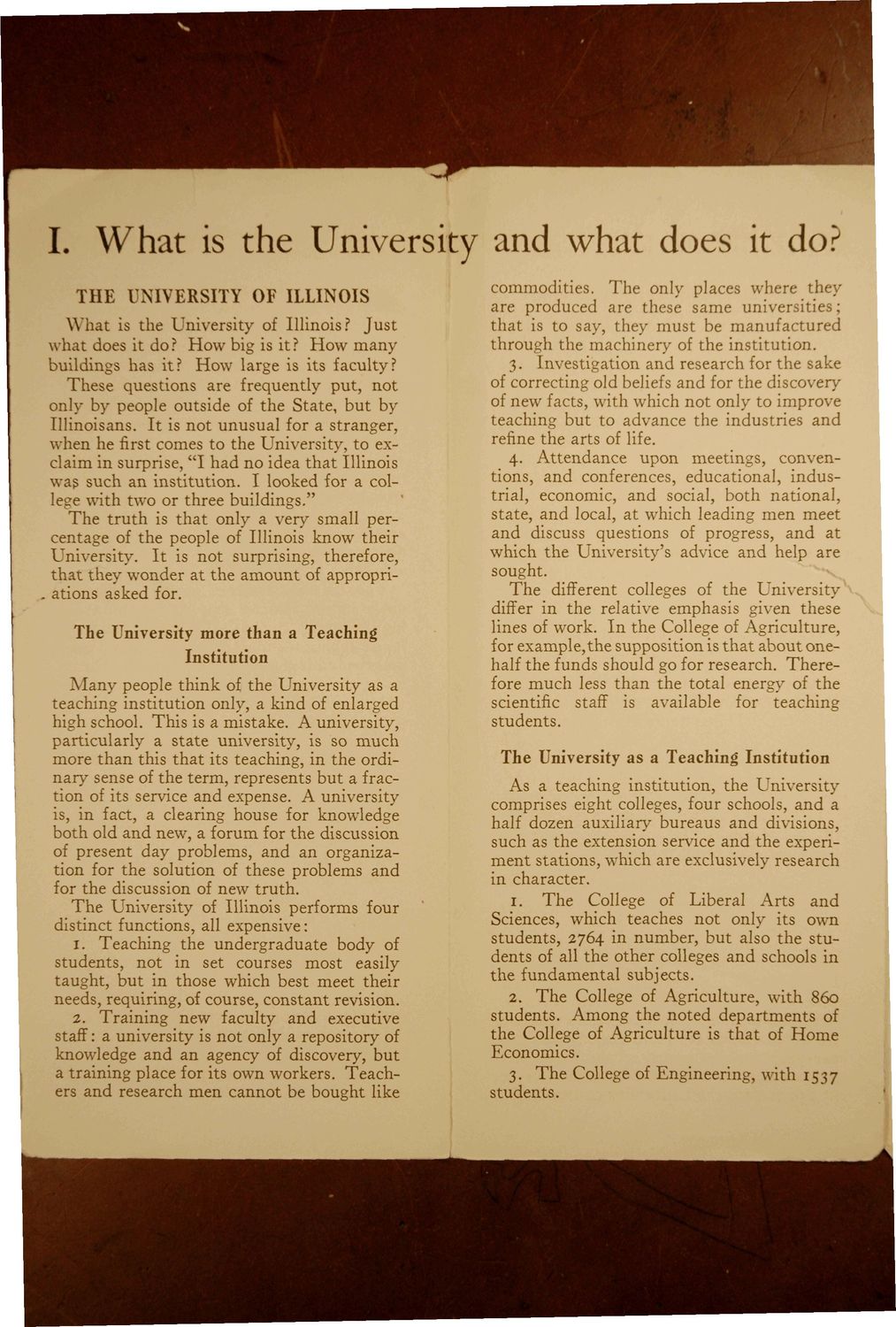| |
| |
Caption: Booklet - Basic UI Facts (1923)
This is a reduced-resolution page image for fast online browsing.

EXTRACTED TEXT FROM PAGE:
I. What is the University and what does it do? THE UNIVERSITY OF ILLINOIS What is the University of Illinois? Just what does it do? How big is it? How many buildings has it? How large is its faculty? These questions are frequently put, not only by people outside of the State, but by Illinoisans. It is not unusual for a stranger, when he first comes to the University, to exclaim in surprise, "I had no idea that Illinois was such an institution. I looked for a college with two or three buildings." The truth is that only a very small percentage of the people of Illinois know their University. It is not surprising, therefore, that they wonder at the amount of appropri. ations asked for. The University more than a Teaching Institution Many people think of the University as a teaching institution only, a kind of enlarged high school. This is a mistake. A university, particularly a state university, is so much more than this that its teaching, in the ordinary sense of the term, represents but a fraction of its service and expense. A university is, in fact, a clearing house for knowledge both old and new, a forum for the discussion of present day problems, and an organization for the solution of these problems and for the discussion of new truth. The University of Illinois performs four distinct functions, all expensive: i. Teaching the undergraduate body of students, not in set courses most easily taught, but in those which best meet their needs, requiring, of course, constant revision. 2. Training new faculty and executive staff: a university is not only a repository of knowledge and an agency of discovery, but a training place for its own workers. Teachers and research men cannot be bought like commodities. The only places where they are produced are these same universities; that is to say, they must be manufactured through the machinery of the institution. 3. Investigation and research for the sake of correcting old beliefs and for the discovery of new facts, with which not only to improve teaching but to advance the industries and refine the arts of life. 4. Attendance upon meetings, conventions, and conferences, educational, industrial, economic, and social, both national, state, and local, at which leading men meet and discuss questions of progress, and at which the University's advice and help are sought. The different colleges of the University differ in the relative emphasis given these lines of work. In the College of Agriculture, for example,the supposition is that about onehalf the funds should go for research. Therefore much less than the total energy of the scientific staff is available for teaching students. The University as a Teaching Institution As a teaching institution, the University comprises eight colleges, four schools, and a half dozen auxiliary bureaus and divisions, such as the extension service and the experiment stations, which are exclusively research in character. 1. The College of Liberal Arts and Sciences, which teaches not only its own students, 2764 in number, but also the students of all the other colleges and schools in the fundamental subjects. 2. The College of Agriculture, with 860 students. Among the noted departments of the College of Agriculture is that of Home Economics. 3. The College of Engineering, with 1537 students.
| |